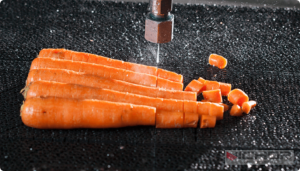
7 Essential Aspects of Pressure Water Jet Cutter You Need to Know
In today’s industrial and manufacturing landscape, precision cutting tools are vital for efficiency and innovation. Among these, the pressure water jet cutter stands out as a versatile and powerful solution. This technology uses high-pressure water streams, often mixed with abrasives, to cut through a wide range of materials with exceptional accuracy. Whether you’re in aerospace, automotive, or art design, understanding the pressure water jet cutter can transform your operations. In this article, we’ll explore seven key aspects of this technology, from its fundamental principles to common challenges users face. By the end, you’ll have a comprehensive grasp of why the pressure water jet cutter is a go-to choice for many industries.
What is a Pressure Water Jet Cutter?
A pressure water jet cutter is a advanced cutting system that utilizes a high-velocity stream of water, typically pressurized to extreme levels, to slice through materials. This process can involve pure water for softer materials or incorporate abrasive substances like garnet for harder ones such as metals and ceramics. The core components include a high-pressure pump, a cutting head, and a controller for precision movements. Unlike traditional cutting methods that rely on heat or mechanical force, the pressure water jet cutter operates without generating heat-affected zones, making it ideal for temperature-sensitive applications. This technology has evolved over decades, offering eco-friendly benefits since it doesn’t produce harmful fumes or dust. In essence, the pressure water jet cutter represents a leap in manufacturing efficiency, enabling intricate designs and reducing material waste.
How Does a Pressure Water Jet Cutter Work?
The operation of a pressure water jet cutter begins with a high-pressure pump that intensifies water pressure to levels exceeding 60,000 psi. This pressurized water is then forced through a small orifice in the cutting head, creating a supersonic jet. For cutting harder materials, an abrasive material is introduced into the stream, enhancing its cutting power. The entire process is controlled by computerized systems that guide the cutting head along predefined paths, ensuring precise cuts with tolerances as tight as 0.1 mm. One of the standout features of the pressure water jet cutter is its ability to maintain material integrity, as the cold-cutting process avoids thermal distortion. This makes it suitable for composites, glass, and even food products. Overall, the efficiency of a pressure water jet cutter stems from its simplicity and power, delivering consistent results across various industries.
Key Advantages of Using a Pressure Water Jet Cutter
The pressure water jet cutter offers numerous benefits that make it a preferred choice in many sectors. First, it provides unparalleled versatility, capable of cutting virtually any material, from soft rubber to tough titanium. This flexibility reduces the need for multiple cutting tools, streamlining operations. Second, the pressure water jet cutter ensures high precision and edge quality, with minimal kerf width and no heat-affected zones, preserving material properties. Third, it is an environmentally friendly option, as it uses water and natural abrasives, reducing hazardous waste. Additionally, the pressure water jet cutter operates with low noise levels compared to other machinery, enhancing workplace safety. Cost-effectiveness is another advantage, as it minimizes material waste and requires less secondary processing. These attributes collectively make the pressure water jet cutter a smart investment for businesses aiming to boost productivity and sustainability.
with low noise levels compared to other machinery, enhancing workplace safety. Cost-effectiveness is another advantage, as it minimizes material waste and requires less secondary processing. These attributes collectively make the pressure water jet cutter a smart investment for businesses aiming to boost productivity and sustainability.
Common Applications of Pressure Water Jet Cutter
The pressure water jet cutter finds applications across a diverse range of industries due to its adaptability. In the automotive sector, it is used for cutting gaskets, interior components, and even bulletproof glass with precision. Aerospace companies rely on the pressure water jet cutter for shaping composite materials and titanium parts, where accuracy is critical for safety. The art and architecture fields benefit from its ability to create intricate designs in stone, glass, and metal for sculptures and building facades. In food processing, a pressure water jet cutter can slice products like pastries and frozen foods without contamination, thanks to its clean operation. Moreover, the electronics industry uses it for precise cutting of circuit boards and insulating materials. This widespread use underscores the pressure water jet cutter’s role as a multifunctional tool that drives innovation and efficiency in modern manufacturing.
Types of Pressure Water Jet Cutters
There are primarily two types of pressure water jet cutters, each tailored for specific needs. The first is the pure water jet cutter, which uses only high-pressure water and is ideal for softer materials like foam, rubber, and food items. This type is known for its simplicity and low operating costs. The second type is the abrasive water jet cutter, which mixes abrasives such as garnet or aluminum oxide into the water stream to cut through hard materials like steel, ceramics, and stone. This variant of the pressure water jet cutter offers greater cutting depth and speed, making it suitable for heavy-duty industrial applications. Some advanced systems combine both types, allowing users to switch modes based on material requirements. Understanding these variations helps in selecting the right pressure water jet cutter for specific tasks, optimizing performance and cost-efficiency.
Maintenance and Operational Tips for Pressure Water Jet Cutter
Proper maintenance is crucial for the longevity and performance of a pressure water jet cutter. Regular checks on the high-pressure pump, seals, and hoses can prevent costly downtime. It’s important to monitor water quality, as impurities can clog the orifice and reduce efficiency. For abrasive systems, ensuring a consistent abrasive flow is key to maintaining cut quality. Operators should also calibrate the cutting head periodically to uphold precision. Additionally, keeping the software updated helps in leveraging the latest features for better control. By following these tips, users can extend the life of their pressure water jet cutter and ensure consistent, high-quality outputs. This proactive approach minimizes repair costs and enhances overall productivity, making the pressure water jet cutter a reliable asset in any workshop.
Frequently Asked Questions About Pressure Water Jet Cutter
When considering a pressure water jet cutter, users often have several common questions. One frequent query is about the operating costs: while initial investment can be high, the pressure water jet cutter often proves cost-effective due to reduced waste and versatility. Another question involves safety concerns; although the pressure water jet cutter is generally safe, proper training and protective gear are essential to handle high-pressure systems. Users also ask about material limitations—though the pressure water jet cutter handles most materials, extremely thick or reflective surfaces might require adjustments. Maintenance issues, such as how often to replace parts like the orifice or abrasive mixer, are also common. Lastly, many inquire about environmental impact, and the pressure water jet cutter scores well here, as it uses recyclable water and abrasives. Addressing these FAQs helps potential users make informed decisions about integrating this technology into their operations.
In conclusion, the pressure water jet cutter is a transformative tool that combines precision, versatility, and eco-friendliness. From its basic workings to its diverse applications and maintenance needs, understanding these seven aspects can help you harness its full potential. While common questions highlight areas like cost and safety, the benefits of the pressure water jet cutter often outweigh the challenges, making it a valuable addition to any cutting-edge facility. As industries continue to evolve, the pressure water jet cutter will likely play an even bigger role in shaping the future of manufacturing and design.
continue reading
Related Posts
- 1371 words6.9 min read
- 1449 words7.3 min read



